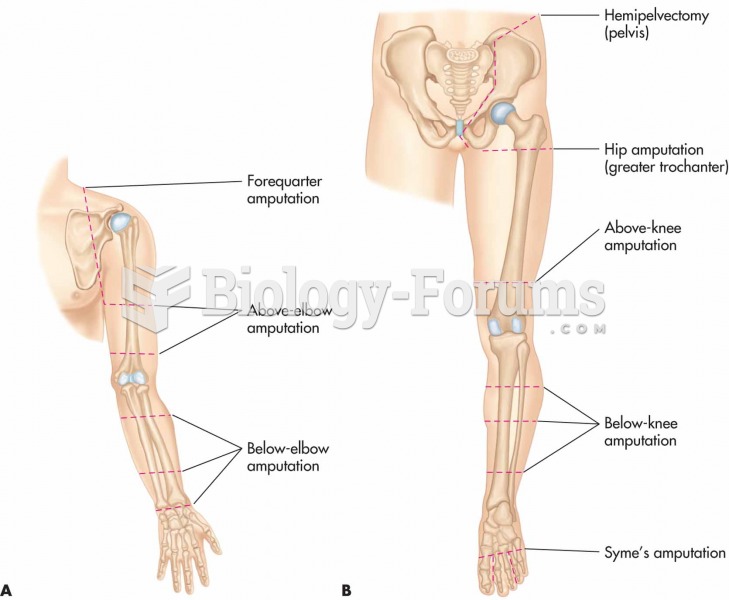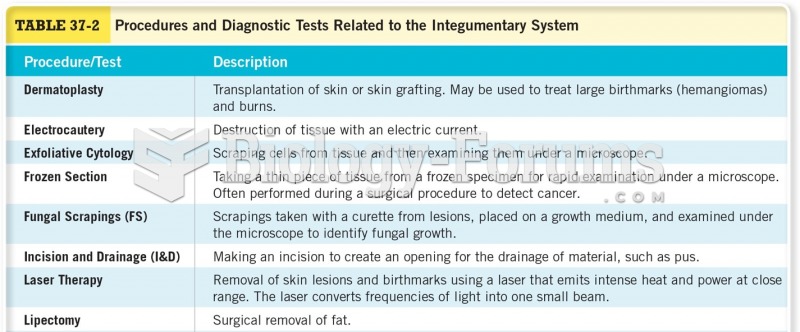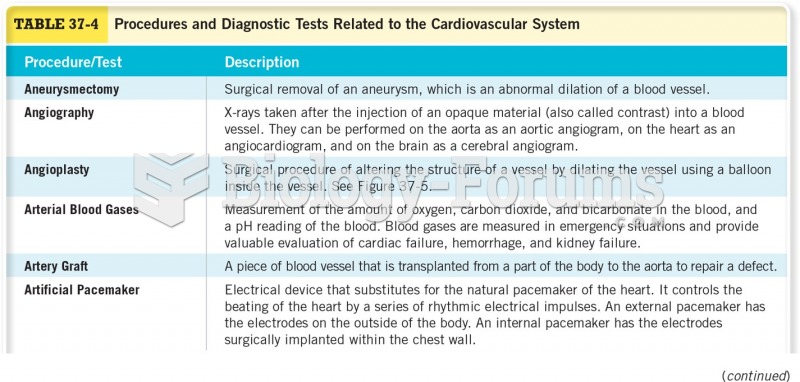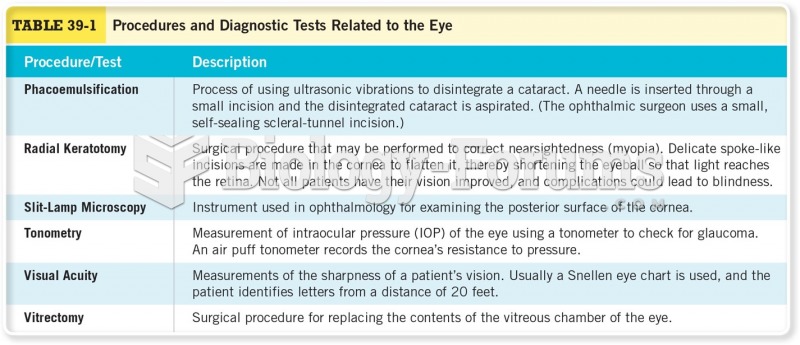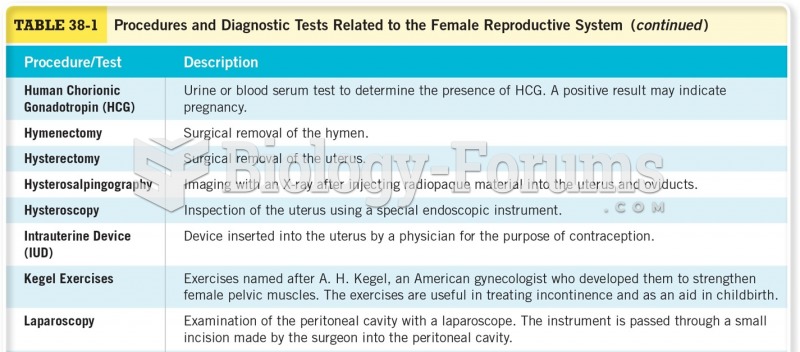|
|
|
Elderly adults are at greatest risk of stroke and myocardial infarction and have the most to gain from prophylaxis. Patients ages 60 to 80 years with blood pressures above 160/90 mm Hg should benefit from antihypertensive treatment.
When blood is deoxygenated and flowing back to the heart through the veins, it is dark reddish-blue in color. Blood in the arteries that is oxygenated and flowing out to the body is bright red. Whereas arterial blood comes out in spurts, venous blood flows.
Earwax has antimicrobial properties that reduce the viability of bacteria and fungus in the human ear.
Illicit drug use costs the United States approximately $181 billion every year.
The calories found in one piece of cherry cheesecake could light a 60-watt light bulb for 1.5 hours.


